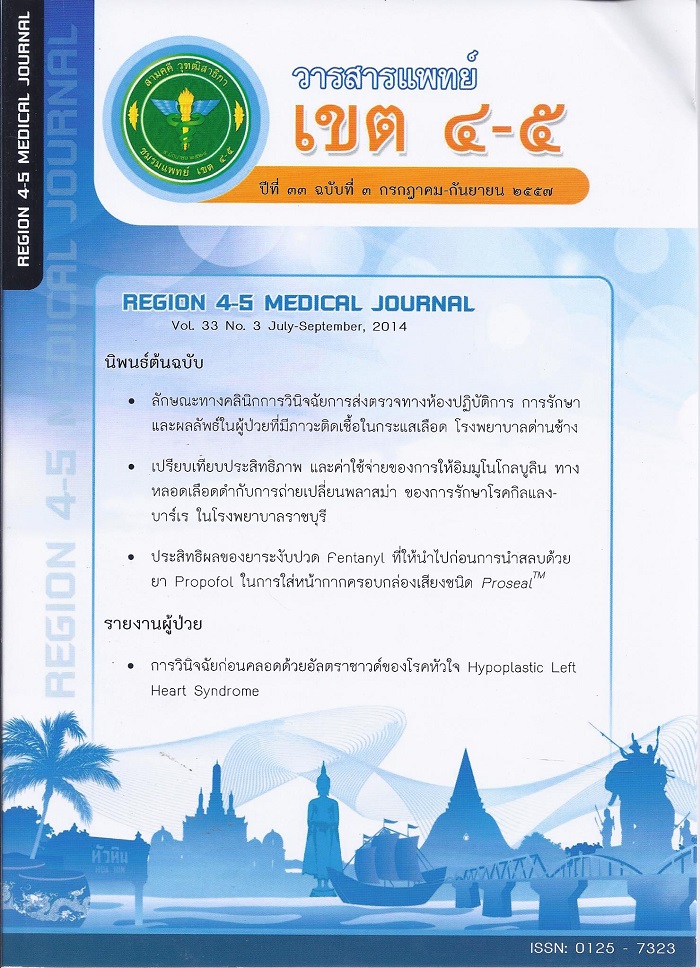เปรียบเทียบประสิทธิภาพ และค่าใช้จ่ายการให้อิมมูโนโกลบูลิน ทางหลอดเลือดดำกับการถ่ายเปลี่ยนพลาสม่าของการรักษาโรคกิลแลง-บาร์เร ในโรงพยาบาลราชบุรี
บทคัดย่อ
Background: The treatment of acute demyelinating polyneuropathy known as Guillain-Barré Syndrome (GBS) improves more rapidly with plasma exchange (PE) than with supportive care alone. There was a multicenter trial determining whether intravenous immunoglobulin (IVIG) is as least as effective as plasma exchange.
Methods: All patients diagnosed as Guillain-Barré syndrome between April 1, 2009 and April 30, 2014 were enrolled. Patients were eligible for PE or IVIG treatment if they were within the first two weeks of GBS with the severity such that they were unable to walk unaided. Assessment of motor function was expressed on a seven-point functional scale at entry, before treatment, after treatment 1 month and follow-up 3 months. The main outcome measure was improvement by one or more grades on the functional scale at 1 month compared at entry. The study aimed for comparing IVIG and PE in the treatment of Guillain-Barré Syndrome including unit cost in Ratchaburi Hospital.
Results: The functional scale had improved by one grade or more in 63 percent of those treated with plasma exchange (PE), as compared with 57 percent of those treated with intravenous immunoglobulin (IVIG). Comparative average functional scale before and after both treatments was not different. Age of the patients was not associated with severity of the disease. Unit cost of IVIG was more expensive.
Conclusions: In the acute Guillain-Barré Syndrome, treatment with intravenous immunoglobulin (IVIG) is as effective as plasma exchange (PE), But IVIG is more expensive. Age of the patients is not associated with severity of the disease.
ดาวน์โหลด
เผยแพร่แล้ว
รูปแบบการอ้างอิง
ฉบับ
ประเภทบทความ
สัญญาอนุญาต
ลิขสิทธิ์บทความเป็นของผู้เขียนบทความ แต่หากผลงานของท่านได้รับการพิจารณาตีพิมพ์ลงวารสารแพทย์เขต 4-5 จะคงไว้ซึ่งสิทธิ์ในการตีพิมพ์ครั้งแรกด้วยเหตุที่บทความจะปรากฎในวารสารที่เข้าถึงได้ จึงอนุญาตให้นำบทความในวารสารไปใช้ประโยชน์ได้ในเชิงวิชาการโดยจำเป็นต้องมีการอ้างอิงถึงชื่อวารสารอย่างถูกต้อง แต่ไม่อนุญาตให้นำไปใช้ในเชิงพาณิชย์




